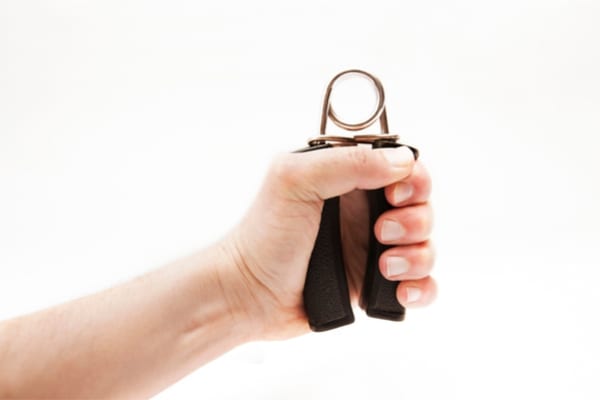Could grip strength determine your life span? As Reuters reports, a large UK study suggests that Grip Strength may be a better predictor of future health than some measurements doctors currently use to gauge risk.
Although grip strength has long been a good indicator of frailty or health in older people, it could help doctors understand adults’ risk profile at all ages, including the odds of heart and lung disease, cancer and overall mortality, the study team writes in The BMJ. “Grip strength is easy to measure and may be useful in helping to predict future disease,” said senior study author Stuart Gray of the University of Glasgow.
The researchers studied more than half a million participants in the UK Biobank project, who were aged 40 to 69 years when they were recruited in 2007-2010. Periodically over the years, participants underwent medical exams, provided samples and answered extensive questionnaires about health and lifestyles. Gray’s team also tracked participants through medical records for an average of seven years. During that time, more than 13,000, or nearly 3 percent, had died, while close to 6 percent developed heart disease, about 2 percent developed respiratory disease and close to 6 percent were diagnosed with cancer.
After accounting for age and a wide range of other factors, such as diet, sedentary time and socioeconomic status, the researchers found that muscle weakness, defined as a grip-strength measurement of less than 26 kilograms (57 pounds) for men and less than 16 kg (35 lb) for women, was associated with higher overall risk of death and higher risk for specific illnesses. Each 5-kg (11-lb) increment of grip strength below these thresholds was tied to a 20 percent increase for women and a 16 percent increase for men in the risk of death from all causes.
For death from heart disease, the risk increased 19 percent for women and 22 percent for men. For death from respiratory disease, the increase was 31 percent for women and 24 percent for men, and for deaths from all cancers, the increase was 17 percent for women and 10 percent for men. Weaker grip strength was not linked with risk of dying from prostate cancer, colon cancer among women or lung cancer in both sexes.
Overall, the researchers note, people with the lowest grip strengths tended to have lower socioeconomic status and were more likely to smoke, to be obese and to have higher waist circumference and body fat percentage. They also ate fewer fruits and vegetables, exercised less and watched TV more.
The study doesn’t prove whether or how muscle strength might influence health, the Biobank participants are not necessarily representative of the general UK population or that of other countries. Still, skeletal muscle’s critical role is often underrated, the researchers write. It controls body movements, serves as the body’s primary protein store and plays an important role in regulating blood sugar.
“This isn’t just about frail adults . . . This is important for adults in the prime of their life,” said Carrie Karvonen-Gutierrez of the University of Michigan School of Public Health in Ann Arbor, who wasn’t involved in the study. “If this is a robust indicator of underlying disease risk, we should consider incorporating it into clinical care . . . particularly in areas around the world where we have limited resources,” she said in a telephone interview.
Researchers have also found that grip strength can be a good overall marker for aging. In Norway, for instance, researchers found that elders’ grip strength in their 80s and 90s can predict the likelihood of making it into the 100s. Some are also looking at whether more recent generations have better health and strength as they age compared with previous generations. “Is 70 the new 60?” said Bjorn Heine Strand of the University of Oslo’s Institute of Health and Society, who wasn’t involved in the current study.
“The research around that particular question is scarce and inconclusive right now,” Strand said by email. “But we know grip strength is a powerful indicator – and a potential biomarker of aging.”
—
Photo Credit: Marian Fil / Shutterstock.com
